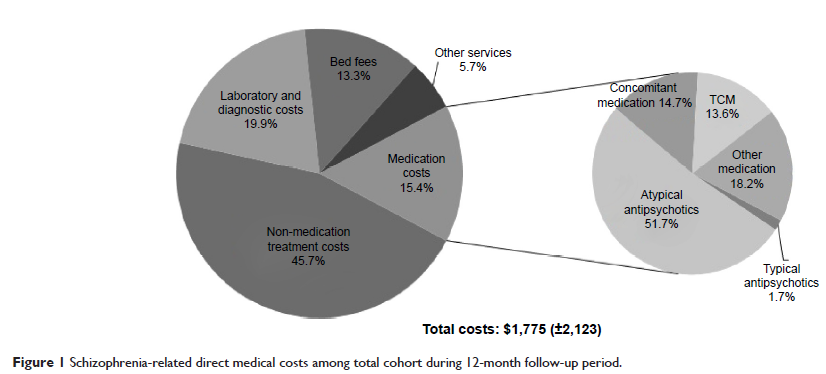9 5 9 4 4
论文已发表
注册即可获取德孚的最新动态
IF 收录期刊
- 3.3 Breast Cancer (Dove Med Press)
- 3.4 Clin Epidemiol
- 2.5 Cancer Manag Res
- 2.9 Infect Drug Resist
- 3.5 Clin Interv Aging
- 4.7 Drug Des Dev Ther
- 2.7 Int J Chronic Obstr
- 6.6 Int J Nanomed
- 2.5 Int J Women's Health
- 2.5 Neuropsych Dis Treat
- 2.7 OncoTargets Ther
- 2.0 Patient Prefer Adher
- 2.3 Ther Clin Risk Manag
- 2.5 J Pain Res
- 2.8 Diabet Metab Synd Ob
- 2.8 Psychol Res Behav Ma
- 3.0 Nat Sci Sleep
- 1.8 Pharmgenomics Pers Med
- 2.7 Risk Manag Healthc Policy
- 4.2 J Inflamm Res
- 2.1 Int J Gen Med
- 4.2 J Hepatocell Carcinoma
- 3.7 J Asthma Allergy
- 1.9 Clin Cosmet Investig Dermatol
- 2.7 J Multidiscip Healthc

在中国天津用于精神分裂症患者的医疗资源和直接医疗费用
Authors Wu J, He XN, Liu L, Ye W, Montgomery W, Xue HB, McCombs JS
Published Date April 2015 Volume 2015:11 Pages 983—990
DOI http://dx.doi.org/10.2147/NDT.S76231
Received 22 October 2014, Accepted 1 December 2014, Published 7 April 2015
Objective: Information concerning the treatment costs of
schizophrenia is scarce in People’s Republic of China. The aims of this study
were to quantify health care resource utilization and to estimate the direct
medical costs for patients with schizophrenia in Tianjin, People’s Republic of
China.
Methods: Data were obtained
from the Tianjin Urban Employee Basic Medical Insurance (UEBMI) database. Adult
patients with ≥1 diagnosis of schizophrenia and 12-month continuous enrollment
after the first schizophrenia diagnosis between 2008 and 2009 were included.
Both schizophrenia-related, psychiatric-related, and all-cause related resource
utilization and direct medical costs were estimated.
Results: A total of 2,125
patients were included with a mean age of 52.3 years, and 50.7% of the
patients were female. The annual mean all-cause costs were $2,863 per patient
with psychiatric-related and schizophrenia-related costs accounting for 84.1%
and 62.0% respectively. The schizophrenia-related costs for hospitalized
patients were eleven times greater than that of patients who were not
hospitalized. For schizophrenia-related health services, 60.8% of patients
experienced at least one hospitalization with a mean (median) length of stay of
112.1 (71) days and a mean cost of $1,904 per admission; 59.0% of patients
experienced at least one outpatient visit with a mean (median) number of visits
of 6.2 (4) and a mean cost of $42 per visit during the 12-month follow-up
period. Non-medication treatment costs were the most important element (45.7%)
of schizophrenia-related costs, followed by laboratory and diagnostic costs
(19.9%), medication costs (15.4%), and bed fees (13.3%).
Conclusion: The costs related
to the treatment of patients with schizophrenia were considerable in Tianjin,
People’s Republic of China, driven mainly by schizophrenia-related
hospitalizations. Efforts focusing on community-based treatment programs and
appropriate choice of drug treatment have the potential to reduce the use of
inpatient services and may lead to better clinical and economic outcomes in the
management of patients with schizophrenia in People’s Republic of China.
Keywords: schizophrenia, health
care resource use, direct medical costs, People’s Republic of China
